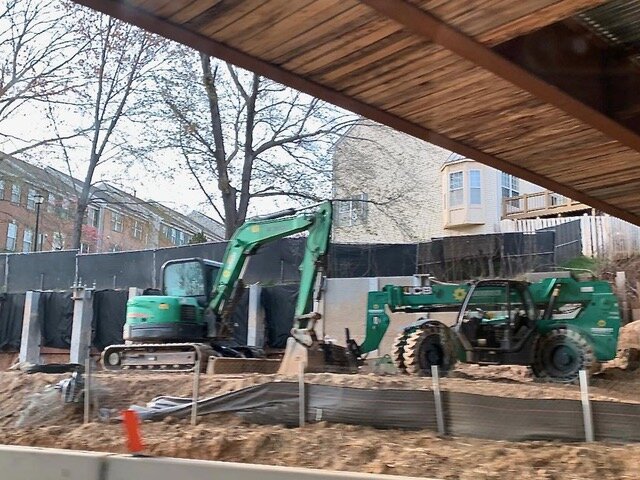Urgent Action Alert
The Metropolitan Washington Transportation Planning Board (TPB) is about to vote on its long-range transportation plan. By Tuesday night, May 18, please email TPB Chair Charles Allen at tpbcomment@mwcog.org and urge the TPB to remove the I-270 P3 toll-lane project from the plan. Tell him the project is bad for your community, for Rockville, and for Maryland taxpayers! Include his name and title (Chair Charles Allen) in the subject of your email so that it is directed to him.
P3 Program Update
Jeffrey Folden, Deputy Director of the I-495 & I-270 Public-Private Partnership(P3) Program, within the Maryland Department of Transportation (MDOT) presented a disturbing Program Update to the Montgomery County Civic Federation on April 20, 2021. His presentation can be found at MDOT Briefing on I-270 & I-495 Expansion Plan. Read more about it starting with “Proposed Access Points” below.
Everything about this toll-lane project will have severe impacts on local communities. Traffic will be worse during and after construction, on and off the highway. This will be exacerbated by new interchange ramps and alternative configurations of existing ramps, ramp metering, variable speed limits, and lane adjustments.
MDOT’s Preferred Alternative is Changing
On January 27, 2021, MDOT disclosed that they had selected Alternative 9 as the preferred alternative for widening I-495 and I-270. Alternative 9 was a 2-lane, high occupancy toll (HOT)-managed lanes network that added two HOT- managed lanes in each direction on I-495 and I-270. It converted the existing high occupancy vehicle (HOV) lane to an HOT lane and added an additional HOT lane on I-270. As shown below, the managed lanes would be in the center lanes of the highway.
Then on May 12, 2021, MDOT announced that their recommended preferred alternative would now only consist of Phase 1 South -- the American Legion Bridge and I-270 to I-370 -- with no action at this time on I-495 east of the I-270 eastern spur or on I-270 north of I-370. Dontwiden270.org is studying this new plan and will provide more information in the next newsletter.
Proposed Access Points
There will be considerable changes in traffic throughout the Phase 1 system with increases in traffic volume at access points for managed lanes and significant traffic impacts on local roads. This process will be very expensive. Ramps leading to the current general lanes will need to be moved in order to widen the highway. Controlling access to the toll lanes requires building a virtual duplicate highway, with duplicated shoulder, medians, barriers, and fly-over access ramps. Not only does this greatly increase the cost, but it also eats up space.
In the Draft Environmental Impact Statement (DEIS) released in July 2020, access road information can be found in Section 2.7.1, starting on p. 86 of the electronic file (p. 2-32 of the text pagination). Mr. Folden displayed the graphic below in his April 20th presentation. His discussion of this slide can be heard in his talk during the time points of 28:20 to 30:13.
The local interstate access plan depicted in the graphic was developed by MDOT based on preliminary traffic, operations, and safety analyses.
Per MDOT, the Phase 1 Developer may suggest revisions to those access points for MDOT’s consideration but it will be MDOT’s decision if any revisions to the access points are incorporated. The Phase 1 Developer does not have decision-making authority -- that lies with MDOT -- but if an MDOT decision brings Transurban’s projected profits below the high level specified in the proposal, Transurban can back out of the entire deal.
As depicted in this schema, MDOT’s access plan is for nine interchanges on each side of this section of the I-270 corridor, some for the free lanes and some for the toll lanes. The access points for general purpose lanes would not change, though interchange configurations will be modified and interchange ramps will be adjusted to accommodate the mainline widening of I-270. Three new access points (Gude Drive, Wootton Parkway, and Westlake Terrace) will be added to provide entrance to the toll lanes.
Importantly, there will be no interconnections between managed and free lanes; I-270 would become a “highway within a highway.” This highway design will not allow drivers in the general lanes to transition directly to the toll lanes and vice-versa. To move between toll lanes and general purpose lanes, it will be necessary to exit the highway, meander through local streets, and then re-enter at an access point to the desired lane. Access to the toll lanes has been designed with the specific intent of making it as hard as possible to switch between tolled and untolled lanes. To maximize the operator’s revenue and make the project feasible, it is necessary to force anyone who wants to use the toll lanes for any part of the journey to use them for their entire journey on that highway.
Traffic Impacts on Local Roads
Mr. Folden presented the illustration below to describe changes in traffic volume on the local road network. His discussion of this slide is in his talk at time points 30:14 to 32:06. The graphic depicts the changes in traffic volume at the access point intersections along I-270 during the a.m. peak period. The plan to convert Gude Drive and Wootton Parkway to toll lane access roads will considerably increase traffic, noise, and pollution and will impact surrounding neighborhoods.
Interstate Access Point Approval
The Federal Highway Administration (FHWA) oversees the Policy on Access to the Interstate System, which stipulates requirements for proposed changes in access to the Interstate System. All new or modified points of access must be justified, approved by the FHWA, and developed in accordance with federal laws and regulations. Any traffic impacts within the community associated with the increased traffic volumes and new connections generated by the project must be documented.
Mr. Folden stated that Interstate Access Point Approval (IAPA) documentation is underway. It will evaluate operation and safety for each interchange and will analyze impacts of increases in demand on cross streets near interchanges. The documentation is being developed by building upon the traffic modeling and analysis completed as part of the DEIS Appendix C (Traffic Analysis Technical Report). Per MDOT, an updated technical traffic report will be publically available with the FEIS. After public comment of the FEIS and issue of a Record of Decision (ROD) by FHWA, MDOT will seek IAPA from FHWA.
This P3 is a huge unnecessary fiasco that will hurt our communities, state finances, and the environment. It will not reduce regional traffic congestion. As pointed out in a letter from Rockville’s Mayor and Council to Comptroller Franchot, “the traffic impacts caused by construction and congestion will be monumental.”
Must-Read Articles
Keep up to date on the latest news on what’s happening with the I-495/I-270 project. Follow coverage of the highway issue on our website at https://dontwiden270.org/archives







